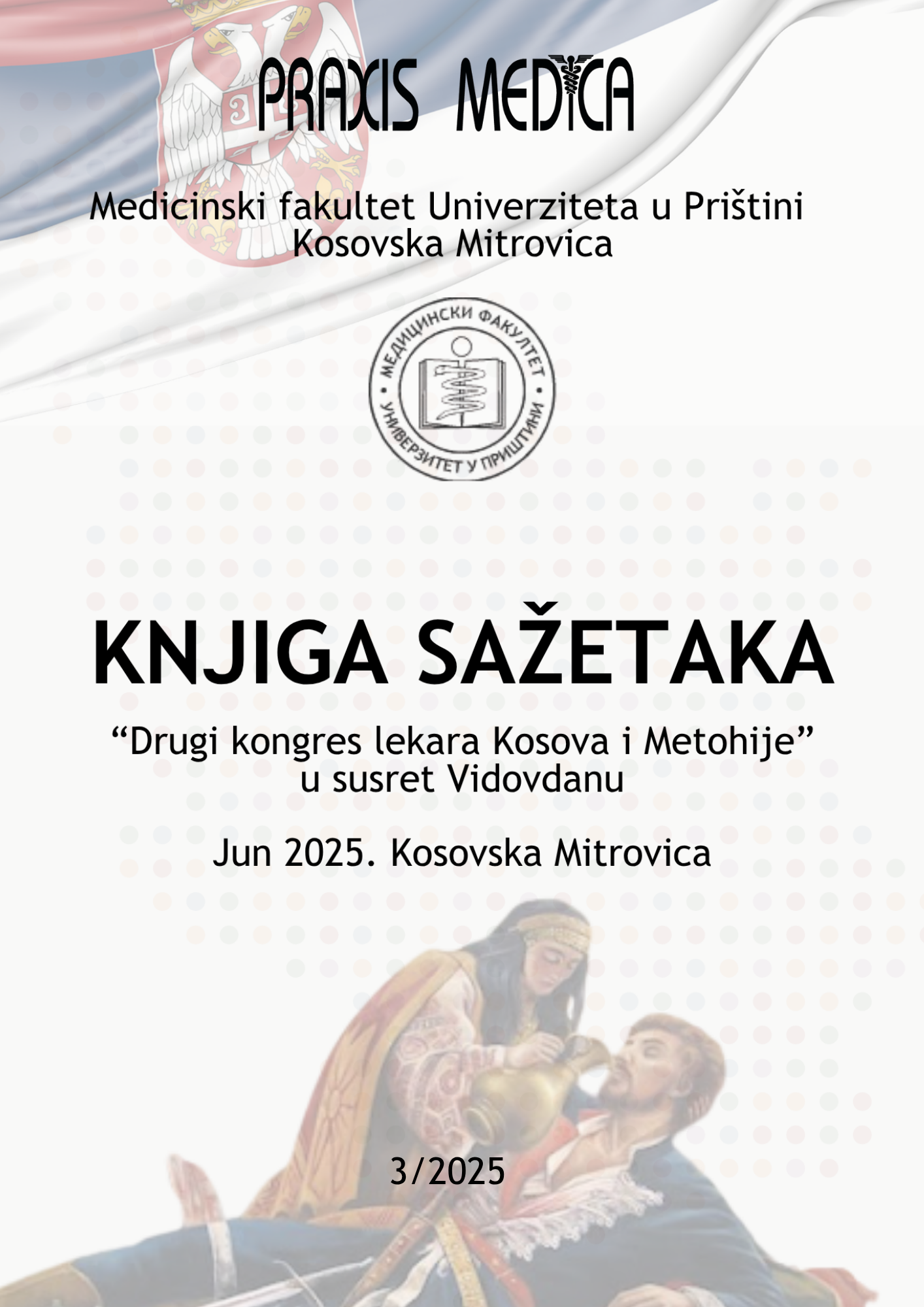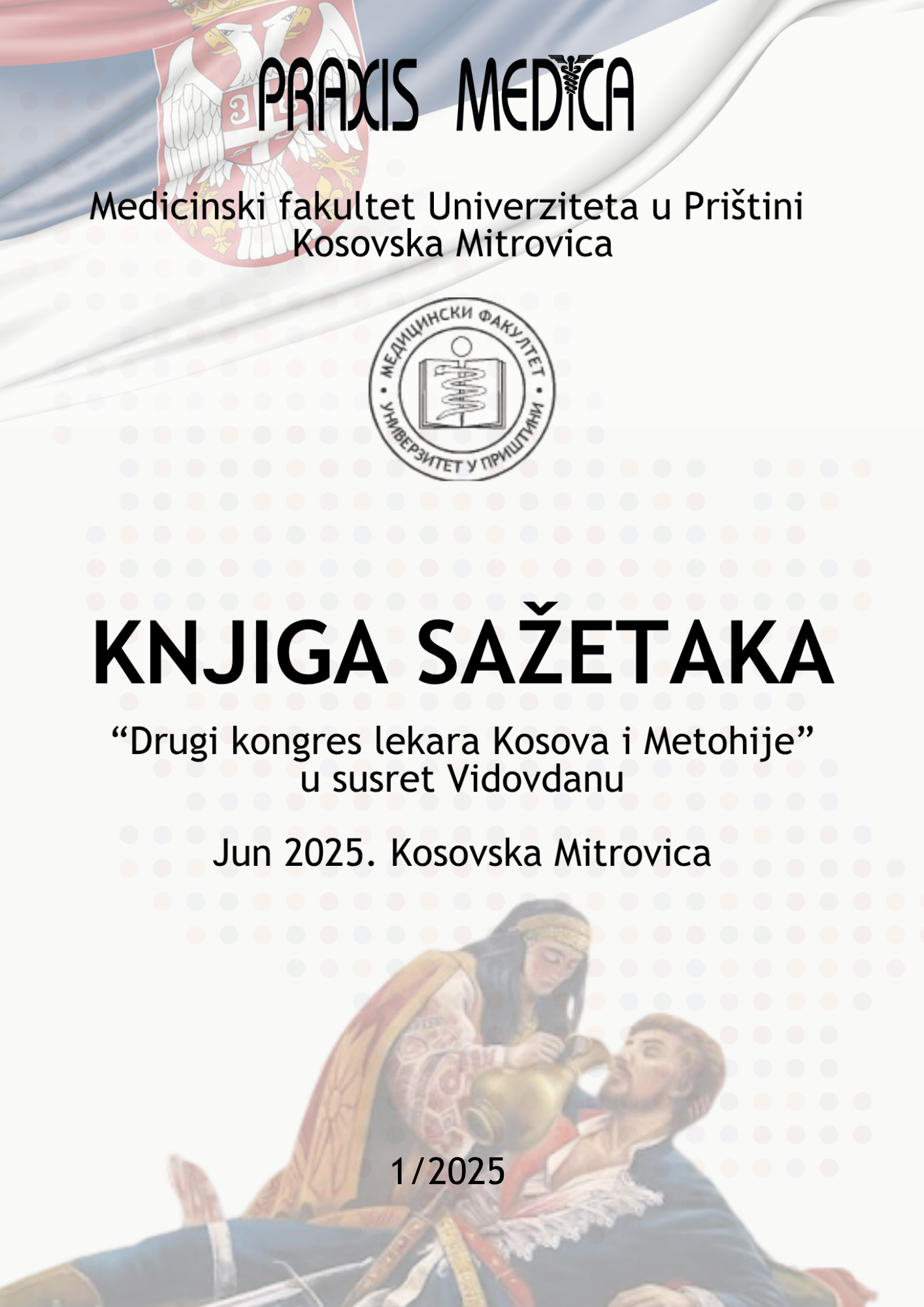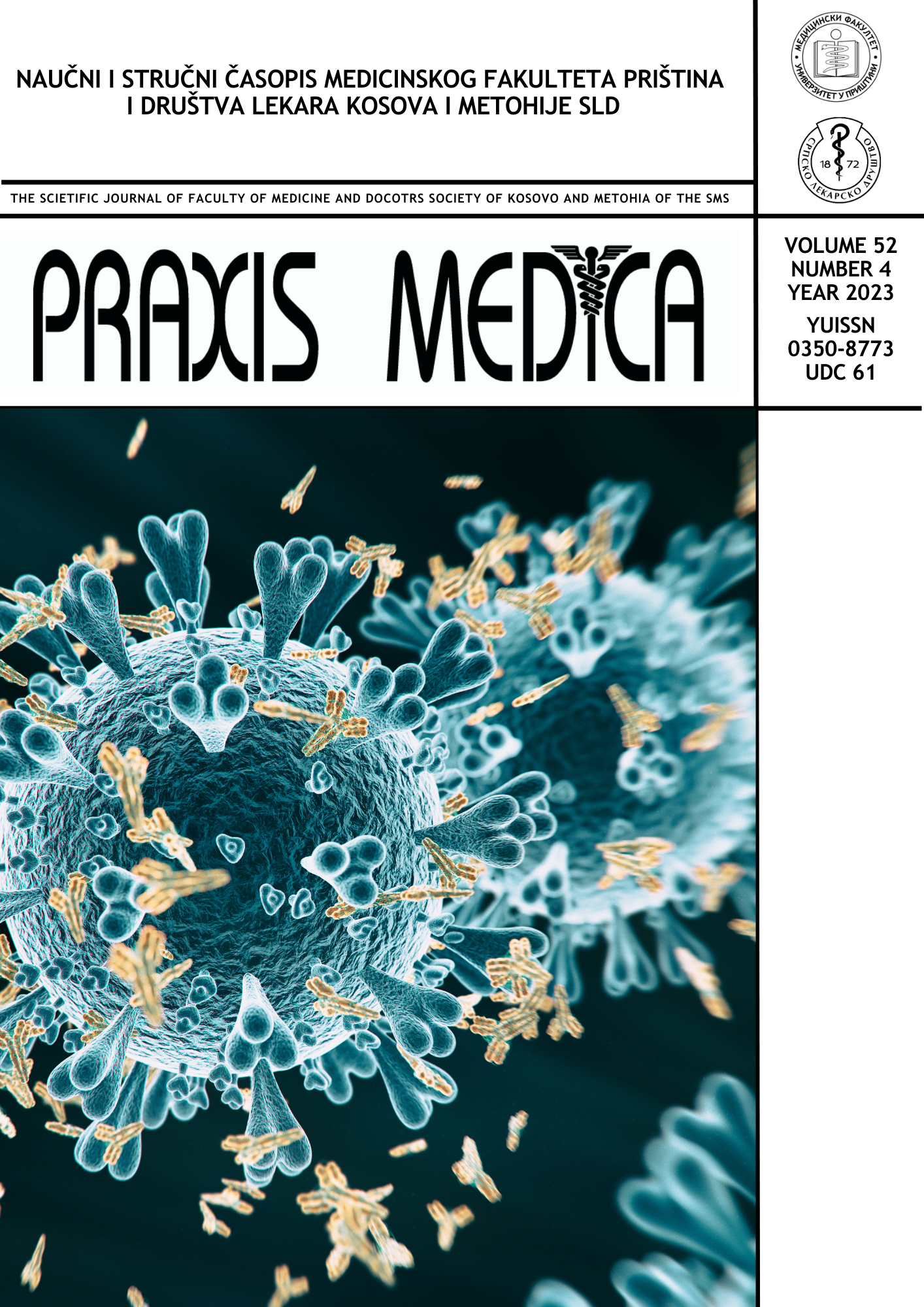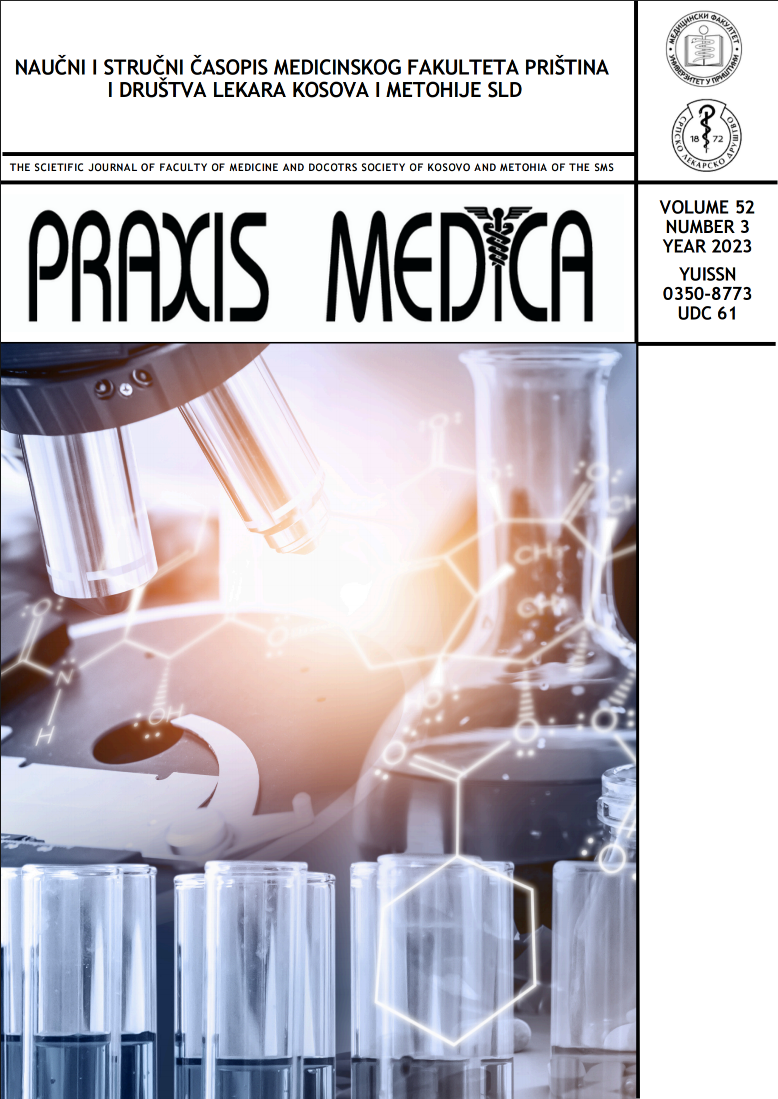Current issue

Volume 53, Issue 4, 2025
Online ISSN: 2560-3310
ISSN: 0350-8773
Volume 53 , Issue 4, (2025)
Published: 30.06.2025.
Open Access
All issues
Contents
01.01.2019.
Original scientific paper
CLINICAL-MORPHOLOGICAL CHARACTERISTICS OF PATHOLOGICAL CHANGES IN THE PROSTATE
The most significant prostate diseases (PD) are benign prostatic hyperplasia (BPH), prostatic intraepithelial neoplasia
(PIN) and prostate cancer (PC). Generally, all PD are rare before the age of 50 with growing number of patients, primarily
with BHP, with each next decade, but about decade later the highest number of PIN and PC began to report. The aim of this
paper is to examine some of clinical, biochemical and histopathological characteristics of BPH, PIN and PC. Our sample
consisted of 169 men. Statisticaly the most common PD was BPH-77.5%, and the rarest PIN-8.3% (p<0.001). The average age of patients was 70.6±7.5 years (51-89) with no significant differences between diagnosis (p=0.415). PIN and PC are more often found in people from urban areas (p=0.004). In the central prostate area BPH is significantly higher in 88.5% (p<0.001). Peripheral parts are significantly more common places of PIN and PC (p<0.001). Median serum PSA values is statistically highest in PC-87.2 ng/ml (12.7-372.5), (p<0,001), especially those with predominantly peripheral parts localization. Gleason score is an important prognostic factor, with average value at PC is 7.32±1.4 (5-10), with a significantly higher values for diffuse PC. BPH is the most common, and PIN rarest PD. All diseases have occurred in people older than 50 years. Usually, BPH is in central and PIN and PC in peripheral prostate parts. PSA values were highest at PC, which is a prove of its importance in malignancy early detection.
Aleksandra Ilić, Dejan Denović
01.12.2018.
Professional paper
Histological characteristics and volume density of elastic fibers in the dermis during aging
Snežana Leštarević, Predrag Mandić, Milica Mijović, Mirjana Dejanović, Dragan Marjanović, Suzana Matejić, Milan Filipović
01.12.2018.
Professional paper
Vestibular nerve schwannoma, treated with gamma knife and diagnosed after transitory ischemic attack in posterior cerebral vascularisation
Snežana Filipović-Danić, Vekoslav Mitrović, Boban Biševac, Nenad Milošević, Jelena Dančetović
01.12.2018.
Professional paper
Craniocerebral injury complicadet by bening cyst of the middle cranial fossa
Vekoslav Mitrović, Radmil Marić, Sanja Marić, Miroslav Obrenović, Vjeran Saratlić, Ivo Berisavac
01.01.2019.
Original scientific paper
SERUM VITAMIN D ANALYSIS IN ACUTE VIRAL BRONCHIOLITIS
Bronchiolitis is an acute viral disease of lower respitatory pathways in children under 2 years of age. It is manifested by coughing, whistling and refusing food intake. The most common cause of bronchiolitis is a respiratory syncytial virus. Vitamin D is a steroid hormone which is synthesized in the skin after sun exposure or food intake. With discovery of Vitamin D receptors and hydroxylated enzymes in immune cells, a potential role for Vitamin D in maintaining immune homeostasis was seen. It has been established that Vitamin D induces a change of the antimicrobial polypeptide, cathelicidin, which has both antibacterial and antiviral roles.
Zorica Vujnović Živković, Snežana Marković Jovanović, Jovan Živković, Mirjana Čukalović, Mirjana Čukalović, Tatjana Novaković, Dragana Stamatović, Jelena Krdzić, Jadranka Mitić, Radica Ristić, Aleksandra Ilić, Predrag Živković
01.12.2018.
Professional paper
The influence of phacoemulsification on corneal oedema in patients with glaucoma
Ivan Bogosavljević, Ivan Marjanović, Miloš Gašić, Marija Božić, Vesna Marić, Jana Mirković, Mona Varga, Milena Šaranović, Miroslav Jeremić
01.12.2018.
Professional paper
Rare malposition of central venous catheter
Nebojša Videnović, Bojan Stojićević, Ranko Zdravković, Jovan Mladenović
01.12.2018.
Professional paper
Risk factors for postpartum depression in the early postpartum period
Jelena Stojanov, Aleksandar Stojanov, Miodrag Stanković
01.12.2018.
Professional paper
Role of general practice doctor in the treatment of Signet ring cell carcinoma
Snežana Knežević, Ivan Gajović, Ljiljana Đurović
01.12.2018.
Professional paper
Examination of the impact of characteristics of the health issues, length of time since themyocardial infarction and comorbidity to the quality of life of diseased of myocardial infarction
Ljiljana Kulić, Milica Vujović











